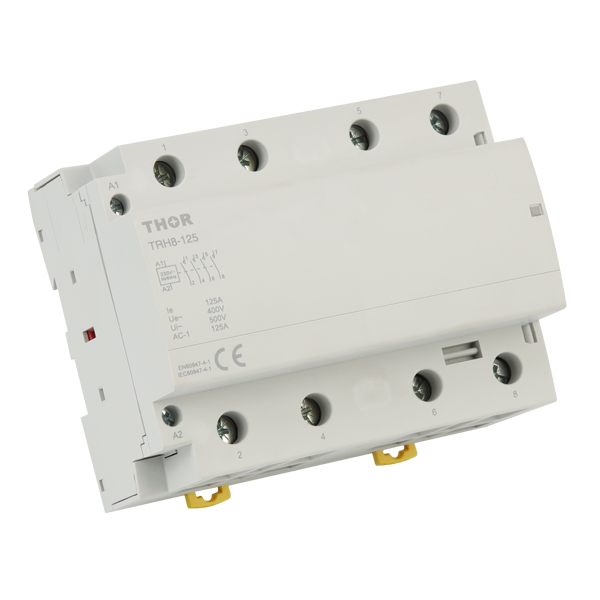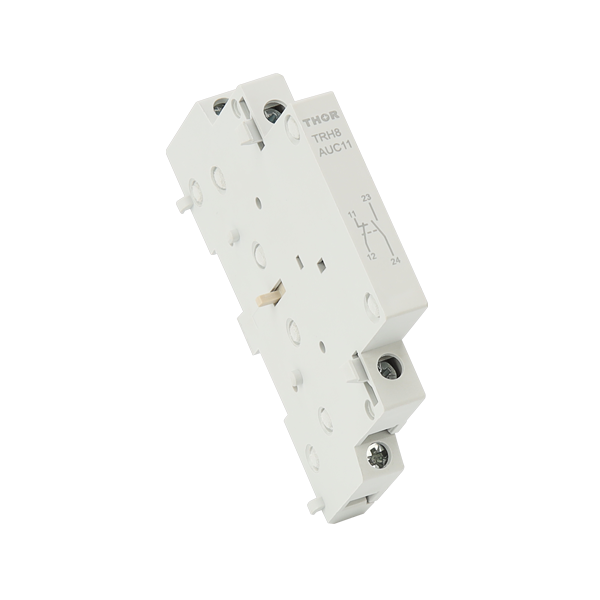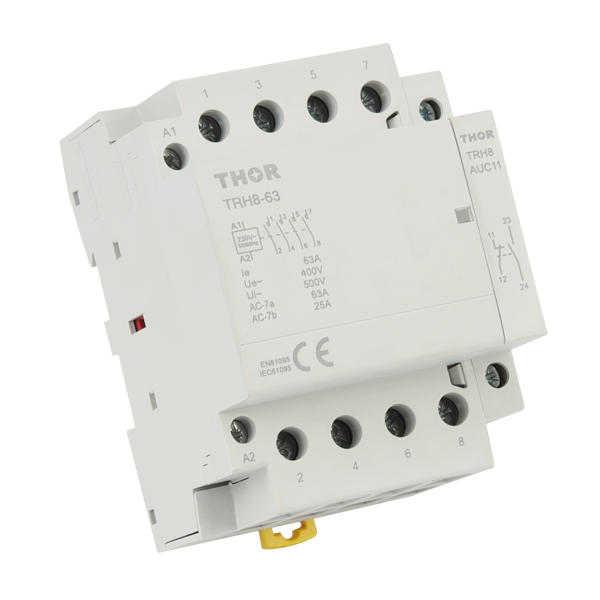To remotely control the switching of circuits in your AC systems, contactors with a response time usually less than 30 milliseconds are used. For instance, a medium-sized factory that uses contactors to control the start and stop of 20 motors can save almost 1,000 hours in manual work per year!
Control of Circuit Switching
The regulation of circuit switching is a prerequisite for the industrial manufacturing industry. You use contactors, the fundamental parts that provide a way to control switching of relatively large currents remotely. One can have a single control panel running the contactors that turn on and off 20 motors along the line, which will greatly enhance production efficiency. Since contactors can operate in 30 milliseconds, they will be able to quickly fulfill any demand placed on them. For example, a medium-sized factory can reduce roughly 1,000 hours of manual operation time per year with automated control systems.
Contactors are also essential in the field of steel fabricators as well as for commercial and residential buildings. Take a large shopping mall, for example, the lighting system can be automatically controlled by setting timers or sensors through contactors to implement intelligent control, saving about 30% of energy use. The energy-saving impact of home automation through controlling household devices using a mobile application is worth considering. According to one well-known home appliance brand, the use of contactors in smart home systems enables up to 20% savings on electricity bills.
Contactors are particularly beneficial in high-precision control scenarios. Contactors remain useful for controlling laboratory equipment to within ±0.1 degrees Celsius in temperature accuracy. Contactors are utilized in elevator systems of high-rise buildings to bring elevators into starting and stopping safely and smoothly. With modern elevator systems, a contactor can last up to 1 million operations, making the equipment more reliable and safe.

Protection Circuit
Protection circuits play a significant role in industrial and residential electricity consumption. If the circuit is overloaded or short-circuited, it can immediately turn off the power in case of emergency to avoid damage to equipment. At one mid-sized manufacturing facility, joining the contactors with overload protection devices prevented a minimum of five pieces of equipment damage last year, avoiding $50K in repair charges. An example of this is that a contactor will respond in around 30 milliseconds to protect the circuit.
In industrial uses, contactors are used in conjunction with circuit breakers to protect the power system. The distributions in the office building have a small number of contactors or circuit breakers interconnected, allowing each overhead bus to be rapidly isolated, thereby limiting fault spread. This reduced the power fault incidents by 15% each year. Smart building management systems, through monitoring the state of contactors, can predict potential failure in advance and improve the stability of operation.
Contactors combined with leakage protection devices can play a very good role in preventing electric shock accidents caused by household electricity consumption. For example, a smart leakage protection socket of an intelligent brand is equipped with a contactor so that it can cut off power within 0.1 seconds when the residual current exceeds 30 milliamps to protect personal safety. This has resulted in almost an 80% reduction in electric shock incidents for homes using such smart sockets. The excellent lifetime of the contactors (up to 100,000 operations) ensures a safe and stable supply of household electricity over many years.

Automated Control
The industrial automation control system greatly improves productivity and reduces operation time in the industry nowadays. For example, an automotive manufacturing plant uses robotic assembly that automates control within the process and produces 30K cars per year with production efficiency up to 40%. It comprises hundreds of contactors, rated at 20 milliseconds response time to ensure accurate operation, with a workmanship error rate cut down to 0.02%.
Automated control systems help improve the efficiency of component installation in electronics manufacturing. A phone manufacturer's automated placement machine, which is capable of placing 120k components per hour, and contactors are designed to withstand up to half a million operations for stable production. Real-time monitoring and data analysis reduce defect rates by 20%, saving approximately $2 million in costs per year.
Automated control systems play a critical role in achieving accurate temperature and pressure control for various processes such as the food processing industry. For example, a major food processing plant that used to struggle with temperature control errors of over half a degree Celsius has now implemented automated system monitoring featuring ±0.5 degrees Celsius accuracy. The system encompasses myriad contactors and sensors that monitor and adjust production parameters in real-time. Enabled automated control has led to a 30% increase in production efficiency, saving $500,000 per year on labor costs and achieving a product pass rate of 99.5%.

Circuit Switching
Circuit switching plays a significant role in today's power systems. Switching between power sources is accomplished with the help of contactors, which are mainly used in electric vehicles. Contactors are used in the backup power system of a hospital to realize seamless switching between the mains and standby power supply within 50 milliseconds, ensuring that medical equipment can operate continuously without risk. Mains interruption occurs about five times per year, and contactors switch fast enough for normal hospital operation.
Circuit switching systems are important in big data centers. Continuous server operations are achieved as contactors automatically switch between primary and backup power sources so servers remain operational without maintenance standby. Switching quickly, contactors can reduce server downtime by 90%, while an average-sized data center will see about ten power fluctuations each year. The instantaneous switching time of breakers and the switching speed of contactors will directly affect the quality of data center services. Ordinary contactors' life is over 1 million operations, ensuring long-term stability and reliability.
In industrial production, circuit switching is equally important. A manufacturing enterprise adopts electromagnetic contactors to realize power switching among different production lines to meet diversified production demands. The company changes lines about 200 times a year, with each change lasting no more than half a second, eliminating production downtimes and boosting efficiency. With the automated circuit switching platform, it can switch according to the production line and increase annual output by 15% depending on market demands. The high-speed switching ability of the contactors assures smooth operation in production processes and energy savings with less power waste.
